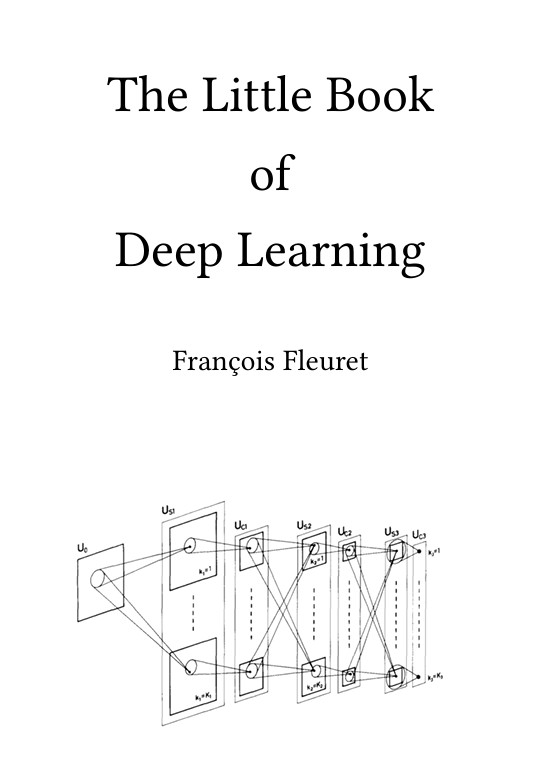In the ever-evolving world of Artificial Intelligence, deep learning continues to be the driving force behind breakthroughs in computer vision, speech recognition and natural language processing. For those seeking a clear, structured and accessible guide to understanding how deep learning really works, “The Little Book of Deep Learning” by François Fleuret is a gem.

This compact yet powerful book breaks down the complexity of deep learning into digestible chapters, focusing on both the mathematical foundations and the practical mechanisms behind modern AI systems. It doesn’t just teach you what deep learning is it helps you understand why it works.
In this blog, we’ll walk you through what each chapter of The Little Book of Deep Learning covers, highlighting the essential ideas and key takeaways that make it one of the best free resources for learners and professionals alike.
Part I: Foundations
The first part of the book, titled “Foundations”, introduces the building blocks of machine learning and deep learning systems.
Chapter 1: Machine Learning
The book The Little Book of Deep Learning begins with the basics of machine learning, explaining how algorithms learn patterns from data. Fleuret emphasizes the concept of learning from data using examples rather than explicit rules to train a model.
He introduces basis function regression, underfitting vs. overfitting and different categories of models such as regression, classification and density modeling. Each concept is illustrated with mathematical intuition and visuals, helping readers see how data is transformed into predictions.
This chapter builds the foundation for understanding deep learning as a natural extension of statistical learning, where neural networks automatically learn useful representations from raw data.
Chapter 2: Efficient Computation
Deep learning is not just about smart algorithms it’s about efficient computation. This chapter explores the crucial role of GPUs (Graphical Processing Units) and TPUs (Tensor Processing Units) in scaling up AI models.
Fleuret describes how computations are organized into batches and how data is represented as tensors multi-dimensional arrays that flow through the layers of a neural network. He explains why efficient hardware utilization and memory management are vital for training large-scale models.
This section gives readers a behind-the-scenes look at the engineering side of deep learning the reason why AI has accelerated so rapidly in the past decade.
Chapter 3: Training
Training is the heart of deep learning, and Fleuret dedicates this chapter to explaining how models learn through loss minimization and gradient descent.
He breaks down:
- Loss functions like Mean Squared Error and Cross-Entropy
- Autoregressive models for sequence generation
- Backpropagation, the algorithm that enables neural networks to learn efficiently
- Stochastic Gradient Descent (SGD) and optimizers like Adam
- The importance of training protocols, learning rate schedules and fine-tuning
The chapter concludes with a discussion on scaling laws showing that as we increase model size, data and compute power, performance follows predictable improvement trends. It’s a powerful insight into why large language models (LLMs) like GPT emerged.
Part II: Deep Models
Once readers grasp the basics, the book dives deeper into how deep learning architectures are structured.
Chapter 4: Model Components
Here, Fleuret introduces the essential building blocks of deep neural networks:
- Linear layers (fully connected)
- Activation functions such as ReLU and Tanh
- Pooling and normalization layers
- Skip connections (used in ResNets)
- Attention mechanisms (used in Transformers)
Each of these plays a specific role in shaping how data flows and transforms within the network. This chapter helps readers understand that deep learning models are modular systems built from layers designed for efficiency, generalization and scalability.
Chapter 5: Architectures
This chapter explores the most important deep learning architectures that have shaped modern AI:
- Multi-Layer Perceptrons (MLPs): The simplest form of deep networks
- Convolutional Neural Networks (CNNs): Designed for image processing and pattern detection
- Attention Models and Transformers: The backbone of modern NLP and vision-language systems
Fleuret connects these architectures to real-world applications, demonstrating how design choices affect model performance and adaptability.
Part III: Applications
The final section of the book focuses on how deep learning models are applied across different domains.
Chapter 6: Prediction
This chapter dives into predictive applications, explaining how neural networks are used for:
- Image classification
- Object detection
- Semantic segmentation
- Speech recognition
- Text–image representation (e.g., CLIP)
- Reinforcement learning for intelligent decision-making
Fleuret shows how these applications depend on the same core principle learning mappings between inputs and outputs using large datasets and layered models.
Chapter 7: Synthesis
Beyond prediction, deep learning also enables content generation. This chapter explores text generation (like GPT models) and image generation (like diffusion models and GANs).
Readers gain insight into how AI can synthesize entirely new outputs from learned patterns, powering tools such as ChatGPT, DALL·E and Midjourney.
Chapter 8: The Compute Schism
The final chapter examines the engineering challenges and trade-offs in scaling AI systems. Fleuret discusses:
- Prompt engineering – how users interact with large models
- Quantization – compressing models for faster inference
- Adapters and model merging – making AI more efficient and customizable
It’s a fascinating look at how researchers manage the growing gap between computational limits and AI ambitions what Fleuret calls the compute schism.
Why This Book Matters ?
The Little Book of Deep Learning succeeds because it balances clarity with depth. In under 180 pages, it covers everything from basic machine learning principles to state-of-the-art deep architectures, giving readers a unified understanding of how AI models are designed, trained, and deployed.
Whether you’re a beginner or a researcher, this book The Little Book of Deep Learning serves as both a primer and a refresher. It strips away jargon and focuses on the essence of deep learning making it a must-read for anyone serious about understanding modern AI.
Conclusion
Deep learning has transformed the landscape of technology, but its true power lies in the concepts that fuel it. François Fleuret’s The Little Book of Deep Learning distills those concepts into a concise readable format that bridges theory, computation and application.
By covering everything from the foundations of machine learning to the mechanics of attention and scaling, The Little Book of Deep Learning book offers a roadmap for anyone seeking to truly understand how machines learn. It’s not just a book it’s a compact course in the science of intelligence.
Follow us for cutting-edge updates in AI & explore the world of LLMs, deep learning, NLP and AI agents with us.
Related Reads
- DeepEval: The Ultimate LLM Evaluation Framework for AI Developers
- Paper2Agent: Revolutionizing Research Papers into Powerful Interactive AI Agents
- Cognee: Powerful Memory for AI Agents in Just 6 Lines of Code
- Join the 5-Day AI Agents Intensive Course with Google
- Docling: Simplifying Document Parsing and AI-Ready Data Processing

4 thoughts on “The Little Book of Deep Learning – A Complete Summary and Chapter-Wise Overview”